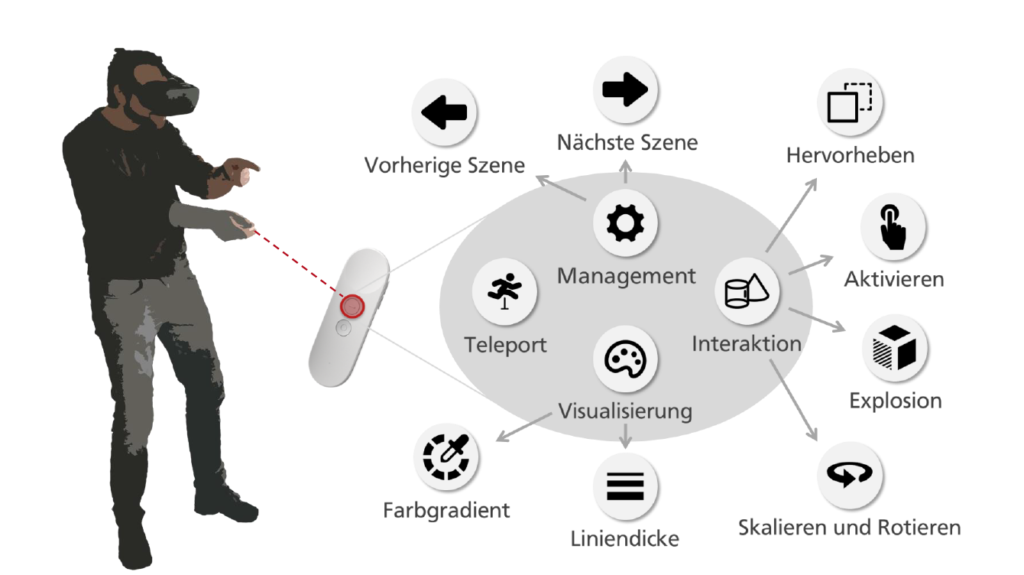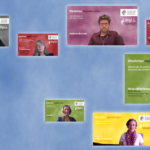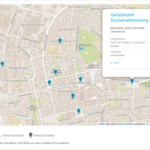The Athene Awards [information in German only] of the Carlo and Karin Giersch Foundation honouring good academic teaching were presented at the TU Darmstadt on 27 November 2019.
The Special Award for Digital Teaching was awarded to the initiators of the project „VR4Teach“ of the Institute of Numerical Methods and Informatics in Civil Engineering and the Institute of Construction Materials in the Department of Civil and Environmental Engineering. They are: Professor Uwe Rüppel; Professor Eddie Koenders; Christian Eller, M.Sc.; Michael Disser, B.Sc.; Pascal Mosler, M.Sc.; Shifan Zhan, M.Sc. and Christoph Mankel, M.Sc.
On this occasion, we would like to include a contribution by Christian Eller that appeared this summer in the Blog of the University Forum Digitisation [information in German only] – among other things as part of the Dossier „Technology“ [information in German only], which introduces technologies that open up new possibilities for university teaching and organisation.
Blog post by Christian Eller [information in German only], published on 8.7.2019 on the University Forum Digitization Blog under the license „Creative Commons Attribution – Disclosure under Equal Conditions 4.0 International“ (CC BY-SA 4.0):
VR4Teach – a cost-effective virtual reality platform for visualisation in teaching
VR4Teach is an innovative virtual reality teaching platform for the easy, collaborative and interactive exchange of teaching content. It can be used in lectures and seminars. VR4Teach is designed to be a cost-effective and simple solution. The application has therefore been developed for the smartphone and other internet-enabled devices. It has a 3D and virtual reality view so students can immerse themselves directly in the action. Teaching staff can make the content interactive and immersively comprehensible.
The VR4Teach platform can display models, animations and entire virtual reality scenarios. It is immaterial whether a smartphone, laptop or tablet is used. A digital and immersive excursion takes place within the application. The tutor guides users through the application interactively. Students can look around and experience the events immersively through the movement. So a joint exchange with new digital models in a virtual space is easily possible.
How does VR4Teach work in higher education?
VR4Teach is an Android app and HTML website. The two are connected by a server. 3D models and animations are stored on the server. When used in a lecture, the models are loaded onto the devices. This enables a performant process and a continuous expansion of VR4Teach.
For the interaction, the tutor uses a specially developed Google Daydream app (from Android 7) with a hand controller. This allows the tutor to mark, scale, activate, rotate and teleport. Every action is synchronised through the server. So everything is also carried out by the students. Students can participate in the digital lecture by accessing the VR4Teach website. In addition to the standard 3D view, students can use their smartphone to activate a virtual reality view. The head movement is transferred directly to the application with a cardboard, and an immersive experience is created.

Virtual Reality: Interaction options with the easy use of a hand controller. Image: Christian Eller
VR4Teach was designed, trialled and validated in lecture mode with students. The students in this survey advocated the extension of the lecture by a practical part by means of virtual reality and rated the operation and use of VR4Teach as simple and intuitive.
Virtual reality in practice: Construction physics to touch and experiencing fire simulation
Construction physics is a complex topic with many theoretical calculations. Fire propagation calculations are often carried out for fire prevention. The results are abstract and difficult to understand. Fire propagation can be visualised with VR4Teach. The scenario of a fire in an apartment was chosen for a demo application. The situation started with a burning sofa, as is often caused by cigarettes. The fire spread, and a sudden ignition of the smoke (flash over) resulted in the whole apartment being on fire (see video). In addition to the apartment fire, a 60-metre long hallway was built to give an immersive impression of the existing visibility in the smoke.
This scenario was tested with the students in a class. The students were able to experience the apartment burning on their own devices. They were then able to rate VR4Teach. Compared with conventional lectures, 91% felt the new technology made sense. Work is now being carried out to investigate how VR4Teach can be used in higher education.
The project was funded by the TU Darmstadt. VR4Teach was developed by the Institute of Numerical Methods and Informatics and the Institute of Construction Materials.
Stakeholders: Prof. Dr.-Ing. Uwe Rüppel; Christian Eller, M.Sc.; Pascal Mosler, B.Sc.; Michael Disser, B.Sc.; Prof. Dr.ir. Eddie Koenders; Shifan Zhang, M.Sc.; Christoph Mankel, M.Sc.; Mona Nazari Sam, M.Sc.

Virtual Reality in higher education: Participants in the VR4Teach test lecture. Image: Patrick Scheich





